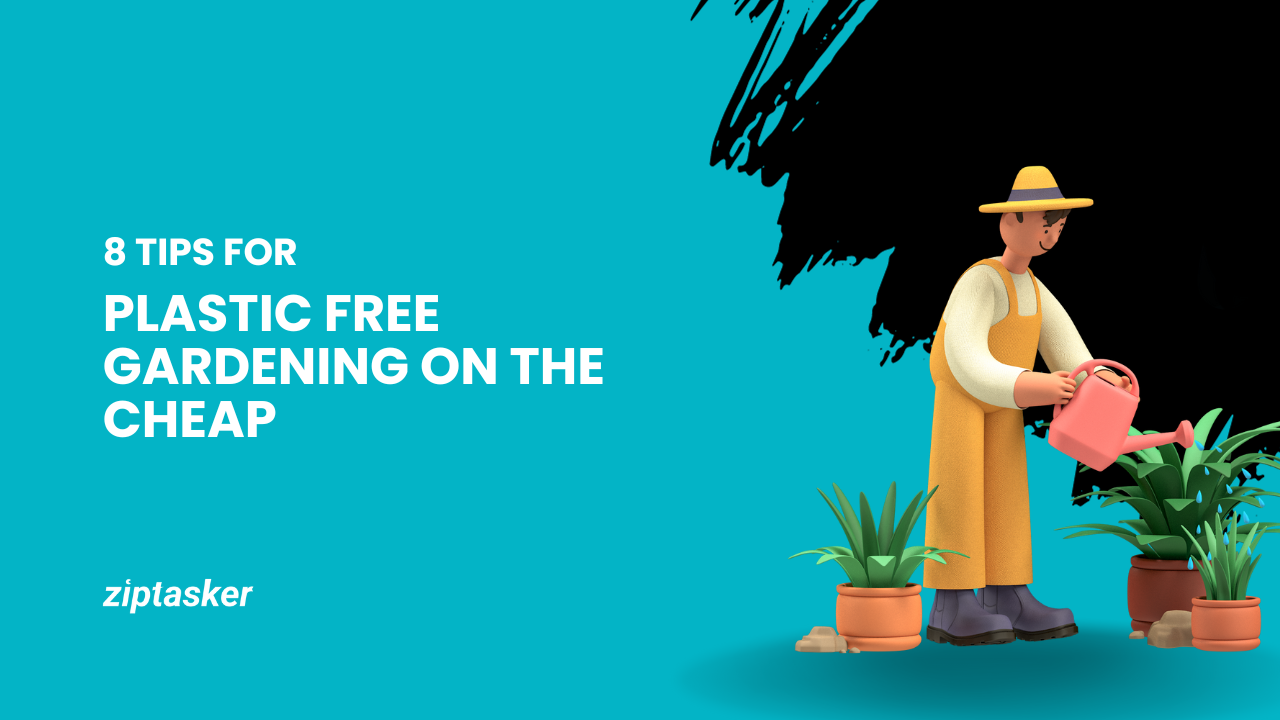A growing number of cultivators are interested in adopting sustainable practices in order to reduce their ecological footprint. An effective approach to accomplish this objective is through the adoption of plastic-free horticulture practices. Although there are numerous plastic-free horticulture products available on the market, they are frequently quite pricey. You have nothing to worry about, as this article will furnish you with ten pragmatic and cost-effective suggestions to initiate your quest for plastic-free horticulture. By implementing these suggestions, you will not only help the environment become healthier but also achieve financial savings.
Making Homemade Seed Starters from Recycled Compost
Rather than investing in plastic seed starting containers, consider constructing your own using recycled materials. As seed starters, egg cartons, yoghurt containers, and newspaper receptacles are all excellent materials. In addition to being economical, they contribute to waste reduction through the repurposing of items that would otherwise be disposed of in landfills.
Compost bins made at home
Investing in plastic compost containers can be expensive; however, constructing your own compost bin is an economical and environmentally sustainable alternative. Make a homemade compost receptacle by repurposing a sturdy container or reusing old wooden pallets. In addition to reducing plastic consumption, this method converts kitchen waste into compost that is rich in nutrients suitable for gardening.
Natural Control for Pests
One can circumvent the use of plastic pesticide containers by preparing their own all-natural pest control solutions. Insect-repelling mixtures composed of components such as cayenne pepper, neem oil, and garlic can be extraordinarily effective. In addition to being economical, these do-it-yourself remedies eradicate the necessity for detrimental chemicals in your garden.
Reusable markers for plants
Recycle plastic plant identifiers in favour of alternatives that are robust and reusable. As plant labels, utilise aged wooden stakes, pebbles, or even fragments of old blinds. This not only aids in the reduction of plastic pollution but also imparts a distinctive and untamed aesthetic to your garden.
Fabric or Hessian Mulch
Replace plastic mulch with organic alternatives such as Hessian or textile. In addition to suppressing vegetation growth and retaining moisture, these substances are biodegradable. Furthermore, incorporating cloth or hessian into your garden can serve to augment its aesthetic appeal while also offering a sustainable and aesthetically appealing resolution.
Pre-owned Gardening Tools
Instead of making the investment in brand-new plastic-handled gardening tools, consider perusing salvage stores or online marketplaces for pre-owned alternatives. Not only do aged, sturdy tools featuring wooden or metal handles diminish plastic usage but they also impart an intriguing historical background that enhances one’s horticulture experience.
Rainwater Harvesting
By utilising the power of rainwater, one can avoid purchasing plastic watering cans. Construct a rain receptacle for garden water collection and storage. By doing so, you not only reduce your plants’ dependence on artificial water sources but also supply them with nutrient-rich, natural water.
In lieu of plastic plant containers, opt for cloth alternatives constructed from materials such as hessian or fabric. In addition to being inexpensive, these containers are also permeable, which provides improved air circulation for the roots of your plants. Since cloth pots are reusable and simple to clean, they are an economical and environmentally beneficial option.
One way to generate unique garden borders is through the repurposing of plastic edging. Utilise reclaimed wood, old bricks, or stones to delineate the perimeters of your garden plots. This feature not only renders plastic landscaping materials unnecessary but also imparts an element of ingenuity to one’s outdoor environment.
Natural Alternatives to Plastic-Packed Fertilisers
Replace synthetic fertilisers with compost, manure, or organic fertilisers produced at home. In addition to being economical, these alternatives supply your plants with vital nutrients while avoiding the detrimental environmental effects commonly associated with synthetic fertilisers.
In conclusion, transitioning to a plastic-free horticulture lifestyle need not be prohibitively expensive. By applying these cost-effective strategies, one can establish a garden that is both environmentally conscious and sustainable, flourishing without the use of plastic. These minor modifications not only have a financial impact but also make a positive environmental contribution, showcasing that eco-conscious horticulture is attainable by all. Thus, put on your thinking cap, unleash your imagination, and observe your plastic-free garden thrive.
Read More: How to Clean Kitchen Cabinets So They Look Good as New







